Monday, September 9, hearing 69
The expert witness Claudia Eugenia Rivera Fernandez appeared and ratified 4 expert reports. The first is related to the exhumation carried out in Acul, Nebaj, Quiché on April 20, 1998. In this exhumation, 23 people were recovered who, according to testimonies, were killed by elements of the army on April 21, 1981. It was determined that all the victims died from gunshot wounds to the skull, and most of them showed traces of ligatures on their hands. Of these victims, 8 could not be identified.
In the second report, the exhumed victims were killed by the army on February 13, 1982, in the villages of Chisis and Quisis, both belong to the municipality of San Juan Cotzal, Quiché. In the village of Chisis 7 graves were exhumed, which were located on private property, from which 22 bones were recovered, however, only 6 could be identified. In the village of Quisis, 4 graves were excavated and 8 skeletons were recovered. All of them had gunshot wounds in the neck.
From the third report, the specialist explained that the exhumations were carried out in clandestine cemeteries located in the villages of Xolanay, Chajul and Nebaj. Thirty-four skeletons were recovered and the cause of death was firearm projectile impact and stab wounds.
The fourth expert opinion dealt with the 102 investigation files carried out in 2017. These documented 552 victims from April 1, 1978 to March 23, 1982. From the documents it is revealed that 44% of the victims were killed in Nebaj, 39% in Chajul and 17% in Cotzal. Also recorded were the deaths of 347 men, 202 women and 3 individuals with no information.
Tuesday, September 10, hearing 70
Forensic Anthropologist, Lourdes Anaité Penados Ceren, ratified 5 expert reports in Nebaj Quiché. The expert testified that in Pulay Village, Nebaj Quiché, an exhumation was carried out and the remains of 26 persons were recovered, corresponding to:
- 8 children between 1 to 5 years old
- 8 children between 5 to 19 years old
- 4 children between 10 to 15 years and
- 5 women between 20 and 30 years of age.
In the skeleton of the victim identified as María Chávez Brito, small bones corresponding to an unborn child of approximately 31 weeks of gestation were found, in whose remains ballistic evidence was found. A Yo-yo was found in the remains of the pants of one of the child victims. All were massacred by elements of the Guatemalan Army on February 25, 1982. The expert showed in a presentation photos of the exhumations.
Other expert reports included the exhumation of victims in villages such as Pulay and Xeo, where skeletons were found in clandestine graves of women and a girl, killed by the army. Evidence of burns and gunshot wounds were found on their skeletons.
On the court screen a photo of one of the graves studied by the expert witness Penados Ceren is shown. Photo: NISGUA
Wednesday, September 11, Hearing 71
At the 72nd hearing of the Oral and Public Debate against retired General Manuel Benedicto Lucas García, archaeologist and forensic expert José Samuel Bolaños, a forensic archaeologist who has worked with the FAFG since 1997, was present.
He has participated in more than 70 exhumations in Guatemala, Colombia, Kosovo, Mexico, among other places. The expert ratified four expert reports related to clandestine graves in the Ixil region during the period in which the former general is accused.
The first expert report, carried out in 1998, refers to the findings in two clandestine graves after the massacre of Acul on August 22, 1981, executed by members of the army. In the graves 23 were found, although only 16 could be identified, all men, confirming the testimonies of the survivors.
In the skeletons found, it was possible to observe trauma caused by firearms and ballistic evidence, as well as signs that the victims had their hands tied behind their backs. According to the survivors’ testimonies, army personnel placed the people at the edge of the grave and then shot them.
The second report was conducted in 2000, in Jauventau, Asich, San Felipe and Chisis, villages located near the area occupied by the former military detachment of San Juan Cotzal. The graves were related to the massacres that took place between January and February 1982 in the aforementioned communities. Two graves were located in Jauventau, three in Asich, one in San Felipe and one in Chisis. In total there were 18 skeletons with exposure to fire. According to testimonies, the soldiers burned all the houses and those who survived were those who were not in the communities at the time.
In the third report, prepared in 2018, also in the villages of Jauventau, Asich and the area occupied by the military detachment of San Juan Cotzal, 16 skeletons were found in Jauventatu, including 9 infants; in Asich a grave with a skeleton and in the detachment a grave with a skeleton. The massacres related to the graves were executed by members of the army on January 23, 1982. All the skeletons found were identified and showed gunshot wounds, evidence of exposure to fire and one in particular showed evidence of cutting wounds, there was also evidence that several victims had their hands tied behind their backs. All the skeletons were identified.
From the fourth report conducted in 2000 in the village of Xolcuay, municipality of San Gaspar Chajul, Quiché, two graves were exhumed and 35 victims were located. 27 of them showed traumas caused by firearm projectile impact and 5 showed blows caused by a blunt object.
Update elaborated through direct observation in Court and information from Verdad y Justicia and FGER.

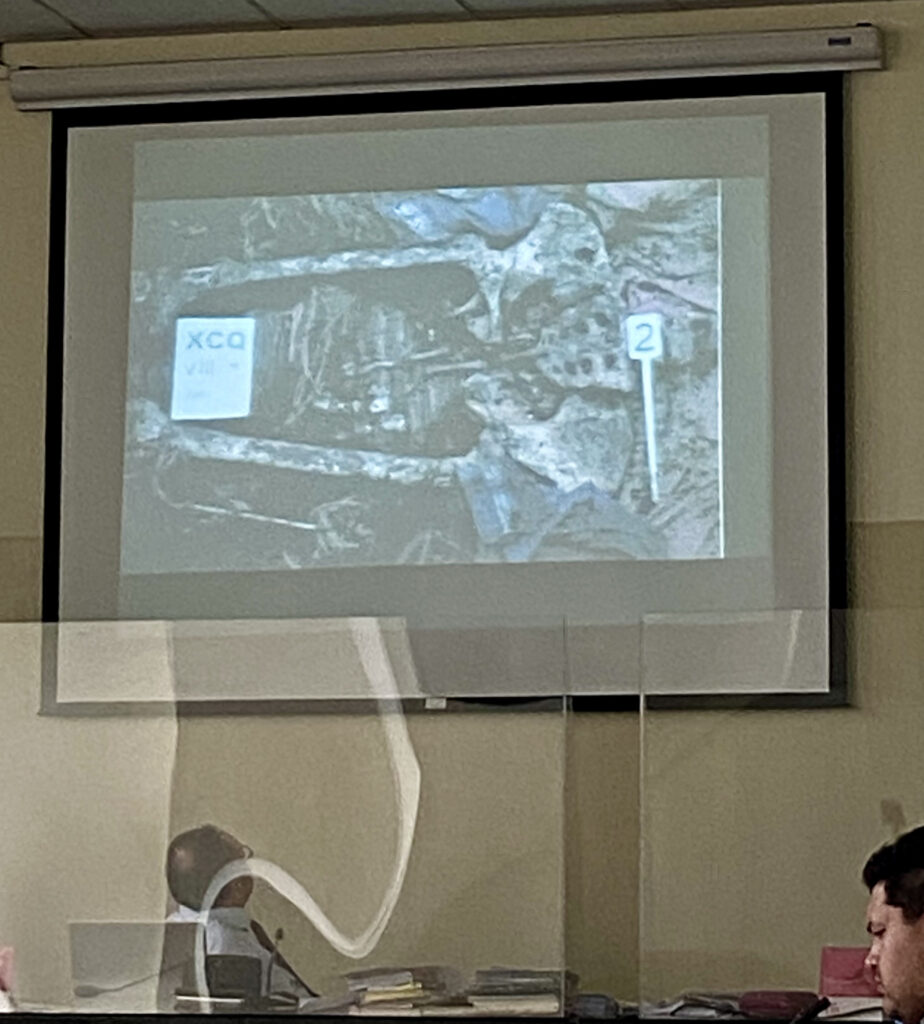
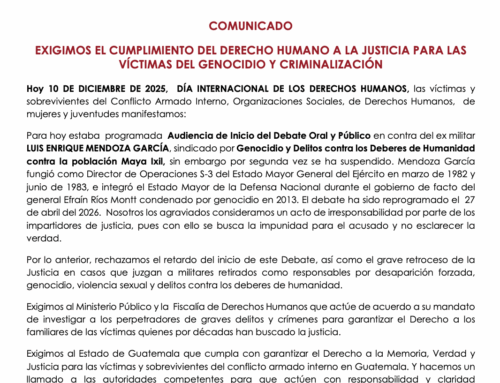
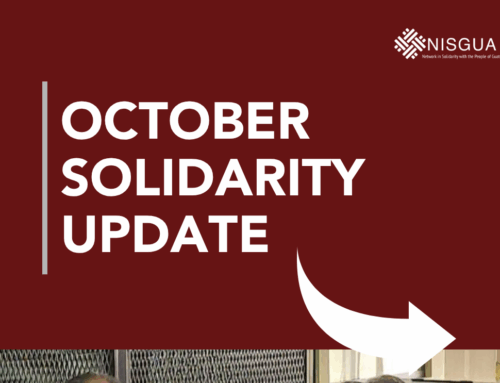
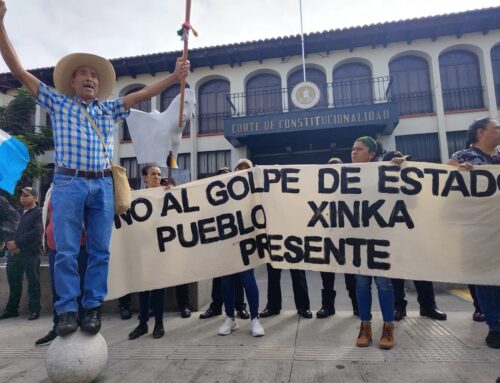
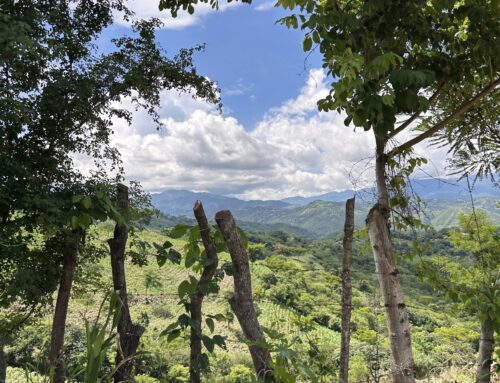
Leave A Comment